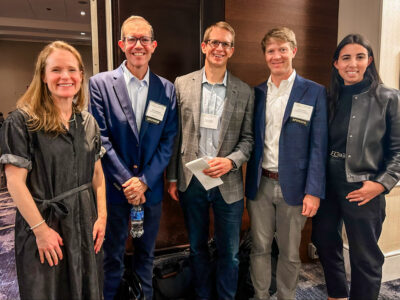In a world where billionaires are taking trips to space, it’s important to remember that even though we can create tech solutions for many issues, it doesn’t mean we have.
Sherri Turpin is the CEO of ZVRS and Purple Communications (ZVRS), an Austin-based communications services company for the deaf and hard-of-hearing community. Turpin is one of many advocates taking a stand at the Federal Communications Commission (FCC) this month, which also happens to be the 31st anniversary of the Americans with Disability Act (ADA).
Turpin told Technical.ly that she wants to see the US to invest in more infrastructure for the deaf and hard-of-hearing community, particularly when it comes to mobile phones and other communications technology. This can be done through federal processes: The company is joining others to call for change in regards to an FCC Notice of Proposed Rulemaking and Order (NPRM). As proposed, the NPRM intends to maintain practices such as a tiered rate structure for calling and a current compensation model for companies that provide communications services, instead of the changes activists and consumer organizations are calling for that they say will lead to more technology development.
“The Commission should encourage innovation rather than stagnant levels of service,” a letter to the FCC reads.
It’s all part of a movement to create the infrastructure necessary to establish functional equivalence. This means that the deaf and hard-of-hearing communities have the same access to the same uses and capabilities for a phone as a hearing person. To help with this, Turpin said her 2,800 employee-strong organization offers several services. These include video relay services, which allow deaf and hard of hearing people to use an interpreter through video calling. It also offers remote interpreting and community services, which entail sending interpreters to help deaf and hard of hearing people while they’re on the go.
The rate cost for providing these communication services is actually paid for by businesses, Turpin said. Corporations like Amazon and AT&T, plus smaller businesses like banks, pay a universal service fee, which is a percentage of their total monthly recurring charges for services like what ZVRS offers. Despite the necessity of the services, according to Turpin, provider rates have been reduced by 47% over the last decade, meaning providers have fewer funds to put towards technology development.
“That 47% reduction has done nothing but really devastate functional equivalence and communication access for the community,” Turpin told Technical.ly.
A key example of infrastructure that’s still lacking, Turpin said, is the fact that deaf and hard of hearing people need two phone numbers: one for calls which connect to a platform with an interpreter, and another for texting. This means that for something as simple as filling out an application with a bank, people need to put two numbers down, and often run into verification issues that hearing people don’t experience.
Turpin said it wouldn’t necessarily be difficult to offer both services with one number, but it will take additional funding.
“How that ripples into their life and is a roadblock for them is something that I’ve realized that the FCC didn’t understand,” she said.
https://www.instagram.com/tv/CRT_QOkr5sA/?utm_source=ig_web_copy_link
An additional issue, Turpin said, is that when deaf and hard of hearing people use their phone number to call 911, the service lacks the geolocation technology that allows emergency services to locate where someone is calling from.
Through the NPRM proceedings, Turpin said the goal right now is to raise awareness that functional equivalence, which the ADA requires, is not happening. She added that providers also need to be held accountable, as they must stay current to the new technology offered to hearing individuals daily.
“So the NPRM for me was, what does the conversation need to be about? What conversations should we be having that are impactful, that are not just continuing to reduce rates?” Turpin said. “And what can we do over the next four, six, eight years with some longevity to finally meet the ADA standard of 31 years ago?”
From a technology perspective, Turpin said ZVRS actually has the ability to get the community what it needs. But she said she needs tech companies and businesses to both embrace the community and offer their collaboration and support to help make sure the providers create functional equivalence and equal access.
“That’s all I need, to allow me to really educate them on how amazing this community is, and stop the barriers that they experience. And it’s not hard,” Turpin said. “It’s just listening and it’s just education.”
(Update 7/27/21) Watch an ASL version of this article below, courtesy of ZVRS and Purple Communications:
Before you go...
Please consider supporting Technical.ly to keep our independent journalism strong. Unlike most business-focused media outlets, we don’t have a paywall. Instead, we count on your personal and organizational support.
Join our growing Slack community
Join 5,000 tech professionals and entrepreneurs in our community Slack today!





